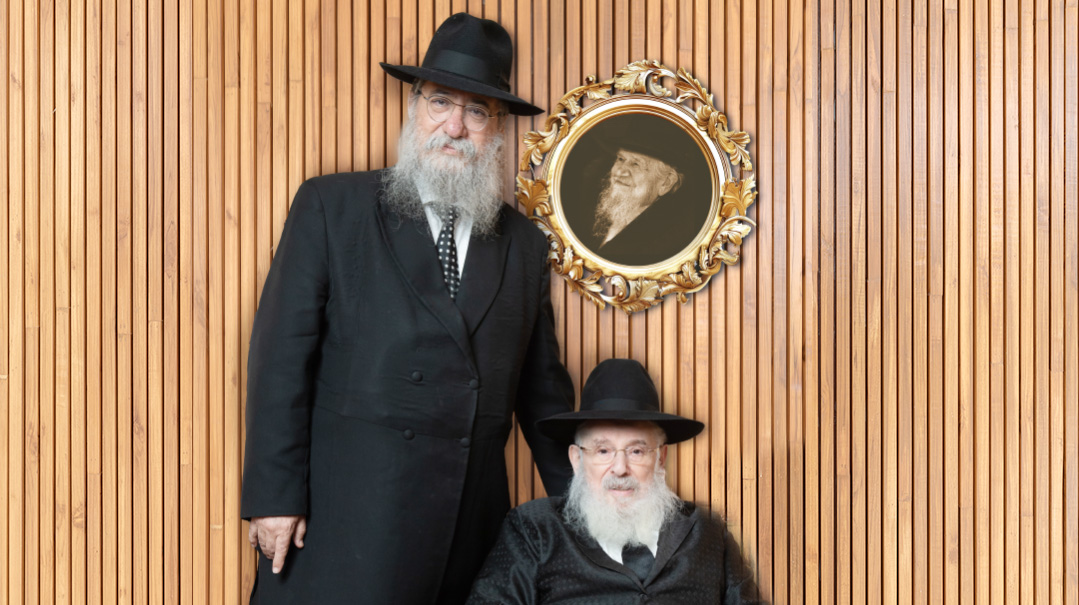Palaces of Prayer


MAGNIFICENT EDIFICE Beis Knesses Yagdil Torah Ohr Yehuda: “When mispallelim enter the shul they’ll feel like they’ve stepped into the most magnificent place in the world.” (Photos: P360)
Once upon a time shuls were works of art: Soaring vaulted ceilings marble pillars intricate woodwork lavish textiles and an aron kodesh that could find its place in a museum exhibition.
Over the years things changed. Building became more expensive Jewish populations dispersed and the grand old shuls of yesteryear were replaced with far more modest structures.
But about 30 years ago the grandeur of the shuls of old began to reappear. Perhaps it was a matter of material wealth. Perhaps it was the confidence of Jewish communities. Whatever the case in Israeland the United States shuls that could stand for centuries were once again being built.
Pinchas Lachiani is a carpenter by trade but he’s so much more than that. He’s the leading shul furniture maker in Israel perhaps in the world. Thirty years ago when he bought a carpentry shop and renovated his first shul he felt he had found his calling.
It was to him that Jerusalem turned when it was time to refurbish the Churva shul in theOldCityto its former glory. It was to him that Vizhnitz turned to build a richly ornamented aron kodesh.
When approaching a project Lachiani says his goal is nothing less than lifting the spirits of every mispallel who enters.
“My job is to create the most special works of art so that when the mispallelim enter the shul they will feel as though they have stepped into the most magnificent place in the world.”
He makes everything from aronos kodesh bimahs and amudei hatefillah to the rav’s chair. Of course benches tables and shtenders are staples. He does this all by hand with a staff of 30 workers out of the headquarters of his workshop in Rechovot.
“Carving by hand is very slow work it can take months” he says. “But the differences between handwork and machine work are readily apparent.”
The price — if you’re curious — is not cheap but Lachiani knows from experience that there are an abundance of generous Jews who feel the honor of their shul is more important than their money. A short list of shuls adorned by his aronos kodesh proves his point: The Churva Synagogue in Jerusalem; the shul built over the tziyun of the Baba Sali in Netivot; the aron kodesh in the Vizhnitzer beis medrash in Bnei Brak; and the shul located over the “bunker” in the IDF Headquarters in Tel Aviv.
Realizing a Dream
Lachiani always imagined he’d be a carpenter. Born in 1960 in Rechovot he grew up in Kiryat Gat as one of 12 siblings.
“My parents adopted another five orphans who became our other siblings” he says. “There were about 20 souls living under one roof. It was a fascinating childhood. I always thought that I lived in a school not a house because of the number of children living alongside me.”
His father sent him to learn carpentry at the trade school in Kfar Chabad. “There I studied the basics of this work” he says. “I learned to work with the technology of wood and I knew I would remain in this field in the future.”
He served in the army as part of the military rabbinate and right after his discharge he purchased a small carpentry shop.
“At first I bought a lathe and worked mainly with tables and beds. I carved a bit into the wood but what brought me to work with aronos kodesh and other shul furniture was the demand. The gabbai in my father’s shul in Kiryat Gat wanted to renovate the shul and he asked me to do the renovation. After that I discovered there is a brisk demand for this kind of work.”
Lachiani also brought a new standard to the field. While many shuls in Europe and synagogues in Northern Africahad magnificent aronos kodesh and other furniture the synagogues of Eretz Yisrael built during the early years of the State were usually very simple. This was partly due to the poverty that was pervasive during those times and the relatively small number of Torah-observant Jews. The result was shul furniture that was similar in quality to the simple furniture found in people’s homes.
Today more than 30 years since he purchased the carpentry shop his company Finish is one of the largest in its field. It employs around 30 highly-skilled artisans many of them from the formerSoviet Union.
“I left all my other affairs and devoted myself only to holy pieces” he says. “I’ve worked on everything from small shuls to huge sanctuaries depending upon the demand. Today we can create any aron kodesh according to the customer’s requests. They can have all kinds of adornments be made of various kinds of wood and with carvings and engravings of all types.”

THE GREATEST JOB OF ALL “My greatest dream is to build the furniture for the Bais HaMikdash” says Lachiani. The renewed Churva Synagogue in Jerusalem’s Old City
Over the years Lachinai has learned that when outfitting a shul there are no clear rules. “The Sephardim and the chassidim like similar styles” he explains. “They like intricate carvings and engravings. In the National Religious sector this is far less common. The litvishe communities also prefer simpler classic styles. But the rules get lost when it comes to reality. Every gabbai and his mispallelim can order any kind of style irrespective of their origins or the sector to which they belong.”
True to the Original
One of Lachiani’s proudest achievements is the work he did for the Churva Synagogue in the Old City of Jerusalem destroyed during the War of Independence.
“There is no Jew who doesn’t recognize the big arch that remained over the ruins of the shul” he says. “When it came time to renovate it I competed in a tender against seven carpenters who were asked to build the aron kodesh for the shul. We had to be able to copy exactly the one that had stood in the shul for so many years.”
Looking back he says his work on the Churva was the most challenging of his career. “We had to build thearon kodesh and then do the engravings by hand. It took a very long time and required huge effort.”
Complicating the job was the great height of the synagogue as well as the aron kodesh. Although Lachiani and his crew built scaffolding he recalls that it started to move like “leaves in the wind.” It was Lachiani’s son who came up with a novel solution: By lowering himself from the roof with rappelling cables he could assemble the top of the aron without fear of falling. “Ultimately ” Lachiani says “the results were breathtaking.”
At the chanukas habayis of the Churva an older man approached him and presented him with a rare photo. “The photo was taken around the time of the man’s bar mitzvah and he was standing in front of the old aron kodesh of the Churva” says Lachiani. “He was so moved to see that the aron kodesh we had reconstructed was identical to the old one he remembered from his childhood.” ce upon a time ” says Lachiani. “He was so moved to see that the aron kodesh we had reconstructed was identical to the old one he remembered from his childhood.”
Oops! We could not locate your form.







